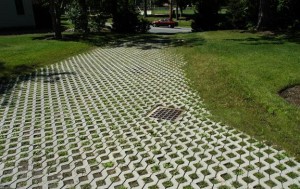1. Fertilizer Use: Don’t Feed Aquatic Weeds
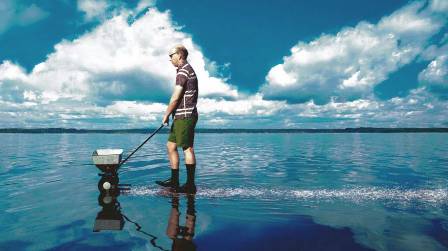 Fertilizer is a “growing” problem for lakes, rivers, and streams, especially if it’s not used carefully. If you use too much fertilizer or apply it at the wrong time, it can easily wash off your lawn or garden into Stockbridge Bowl. Just like in your garden, fertilizer in lakes and streams makes plants grow. In water bodies, extra fertilizer can mean extra algae and aquatic plant growth. Too much algae causes water quality problems and makes boating, fishing, and swimming unpleasant. As algae decay, it uses up oxygen in the water that fish and other wildlife need.
Fertilizer is a “growing” problem for lakes, rivers, and streams, especially if it’s not used carefully. If you use too much fertilizer or apply it at the wrong time, it can easily wash off your lawn or garden into Stockbridge Bowl. Just like in your garden, fertilizer in lakes and streams makes plants grow. In water bodies, extra fertilizer can mean extra algae and aquatic plant growth. Too much algae causes water quality problems and makes boating, fishing, and swimming unpleasant. As algae decay, it uses up oxygen in the water that fish and other wildlife need.
Tips:
- Don’t Guess – Soil Test. Have your soil tested to find the right does and type to match plant needs – you may find that you do not need to fertilize at all. A standard soil test typically costs $10 or so. (Call the UMass Extension Soil Testing Lab at 413-545-2311 or download a soil test order form athttp://www.umass.edu/soiltest/
- More in NOT better — use fertilizer sparingly. Many plants don’t need as much fertilizer or need it as often as you might think. Too much can actually harm or burn them.
- Don’t feed the lake’s weeds – use slow-release low- or no-phosphorus fertilizers. Keep fertilizers out of runoff pathways and don’t fertilize if there’s a chance for a heavy rain.
2. Vegetate Exposed Soils
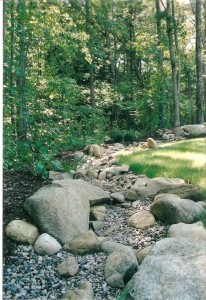 Plant grass, ferns or other ground cover on bare and eroded areas to hold soil in place. If you feel you need help from a nursery, take photos of your site to help the professional staff understand your conditions. Here are a few tips:
Plant grass, ferns or other ground cover on bare and eroded areas to hold soil in place. If you feel you need help from a nursery, take photos of your site to help the professional staff understand your conditions. Here are a few tips:
- Shady areas can be tough to revegetate. Visit a darkly forested area near you to see what vegetation is under the forest canopy. Are there ferns or other plants surviving? If you need help, consult the nursery or a landscaper. Project Native in Great Barrington is a good source for native plants.
- Steeply Sloped areas may need to be stabilized to help plants establish. Erosion controls may be needed to keep runoff from washing seeds and young plants downslope. Choose a fast-growing grass cover type, such as a conservation mix of grass and clover, to cover an area quickly. Consult the nursery or landscaper for fast-growing shrubs and trees that might work for you.
- Driveways can be a sediment source. If your driveway drains into the lake or into a drainage area to the lake, consider installing a series of water bars. Direct the runoff to infiltration trenches of stone to capture sediment. Consider replacing the gravel driveway with lattice pavers that allow some rainwater to soak in between the grassed blocks,while maintain a strong surface for vehicles.
3. Shoreline Buffers
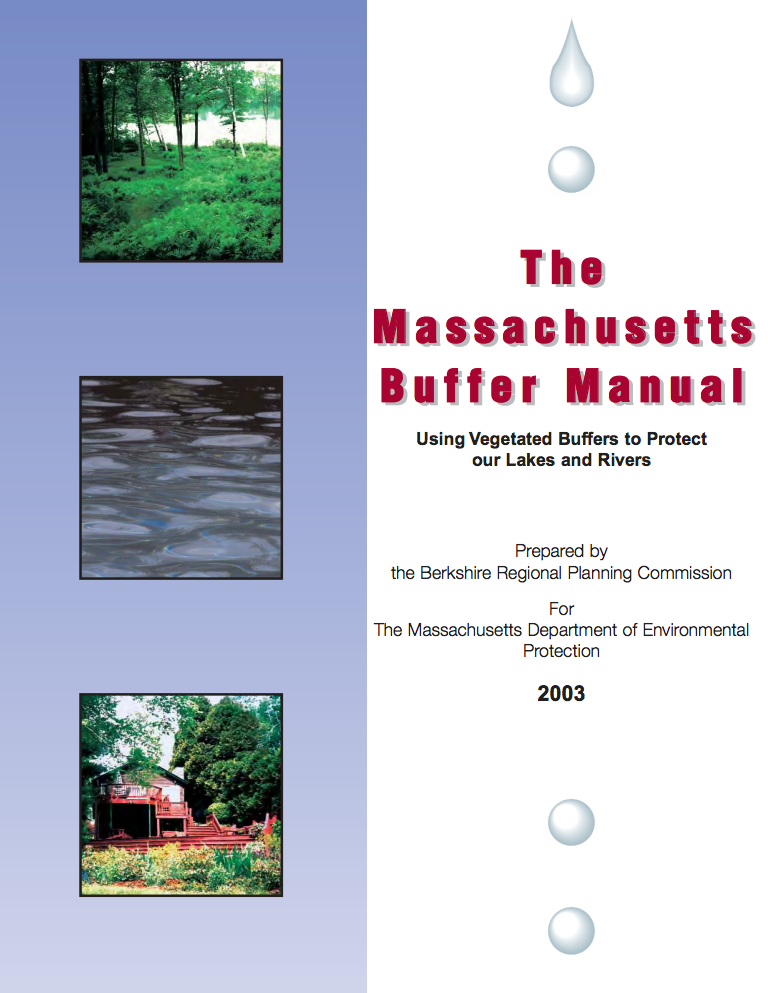 Vegetation along the shoreline provides that last chance to capture sediment or phosphorus traveling in runoff, physically impeding surface flow and helping to filter out pollutants. Forested areas can absorb 15 times more rainfall than grass or turf. The deeper roots of shrubs and trees also capture phosphorus traveling underground in saturated soils. Deep roots also hold shoreline soils in place, reducing erosion potential.
Vegetation along the shoreline provides that last chance to capture sediment or phosphorus traveling in runoff, physically impeding surface flow and helping to filter out pollutants. Forested areas can absorb 15 times more rainfall than grass or turf. The deeper roots of shrubs and trees also capture phosphorus traveling underground in saturated soils. Deep roots also hold shoreline soils in place, reducing erosion potential.
- Populate that shoreline buffer with shrubs that flower or fruit. Tell your landscaper or nursery to help you choose native shrubs that will flower at different times of the year for a changing palette of color. These will also be more likely to attract birds and butterflies.
- If using compost or mulch, do so lightly and in a manner that keeps it from washing into the lake or nearby stream. These can be sources of phosphorus
- Bonus: tall vegetation will also deter geese from coming onto your lawn to feed. Geese like the comfort of having a clear view and pathway to the water to be able to quickly escape predators. This is especially true of geese that have flightless goslings. So, block their view with shrubs, tall grasses or flowers
- To learn more about how shoreline buffers work and tips on landscaping, refer to the very user-friendly Massachusetts Buffer Manual.
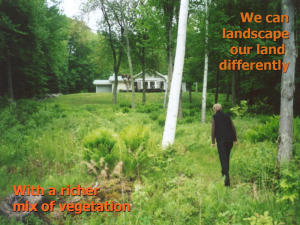
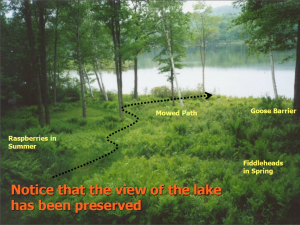
4. Reduce Impervious Surface Areas
Creating as little as 10-20% impervious surface area on a residential property can double the rate of runoff from the site, and with runoff comes sediment and phosphorus. Consider replacing impervious blacktop or concrete driveways and patios with pervious techniques such as grass or stones, flat stones or lattice pavers that allow some rainwater to soak in between the blocks.
- Got a paved or gravel boat launch site down to the lake? Consider replacing it with grass – you probably only use it once or twice a year, so the grass will survive just fine. Alternately consider grass “pavers”, which are honey-combed grids filled with a sand/soil mix and planted with grass. The result is a stable grassed surface for cars that allows percolation of runoff.
- When replacing impervious surface areas on steep slope, design it carefully so that runoff does erode and wash materials such as gravel or stone downhill into the lake.
- Where paved areas remain, create berms or plant vegetation to capture runoff.
5. Lawn Care – mow high & let clippings lie
As turf experts will readily tell you, keep your grass 2.5” to 3” tall to promote deeper root growth and denser thatch. The taller, denser lawn will be able to withstand heavy stormwater flows and filter out sediment within those flows. It’s a myth that you’ll have to mow more often if you leave the grass 3” high – you will be able to stick to the same mowing schedule once you start this new regime. Surprisingly even some professional landscapers will mow too low, so keep any eye on your lawn company.
- Taller, denser grass helps to shade out some weeds and increase endurance during hot, dry spells.
- Leaving the clippings on the lawn returns nutrients (such as nitrogen for green leafy color) back into the soil for uptake and more growth. Grass brakes down into its nutrient elements quickly, so keep clippings out of the lake to avoid infusion of unwanted nutrients.
- Consider aerating your lawn every few years, especially areas were the soil has become compacted. Aerated soils allow better percolation of water and air down to grass roots and soil organisms, where nutrients traveling in runoff can be absorbed.
6. Rain Barrels
Roof runoff is typically discharged at one or two key points around the home, and the force often creates ditches or gullies in the lawn. If traveling across driveways or fertilized areas, the runoff can carry pollutants to the lake or nearby stream or drainage ditch. Capture roof runoff in a mosquito-proof rain barrel. The water can be used to irrigate your lawn or plantings on a dry day.
7. Septic Systems – Check it, Fix it, Maintain it
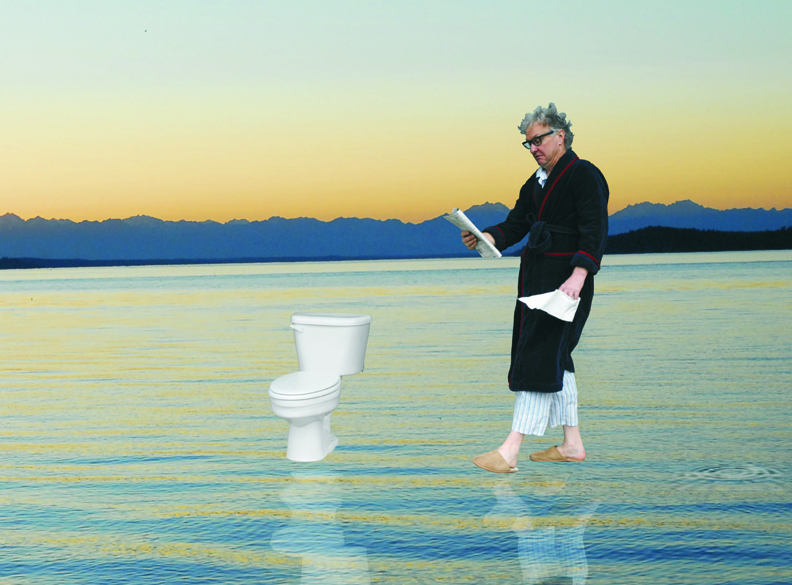 When your home septic system fails, remember…it doesn’t just fail at home.
When your home septic system fails, remember…it doesn’t just fail at home.
A recent survey of property owners showed that many people are unsure of when they last had their septic tank pumped or are unaware of where their leach field is located. Many admit that they pump their tank only when it acts up. If septic systems fail and overflow, surface runoff can carry untreated bacteria, viruses, phosphorus, medicines and other pollutants from your yard to the lake, threatening your family’s and the public’s health. Severe overflows can cause beach closures.
- Get regular inspections and maintenance. If you’ve never inspected your system, start inspecting once a year until you can establish a routine. Choose a date or time of the year for inspection that’s easy to remember and mark it on your calendar.
- Do not send pet waste, medications, grease or toxic chemicals into your system. Use your garbage disposal sparingly – those solids are often hard to break down.
- Watch for cues that your tank is nearing capacity or your system is failing. Got odors? Get someone out to check it right away. Then fix it, if needed.
- Conserve water. Too much can cause solids to escape your tank and plug your drainfield
- US EPA’s SepticSmart. Learn more about how your septic system works and simple, everyday tips on how to properly maintain it.
8. Car Washing: Phosphorus load
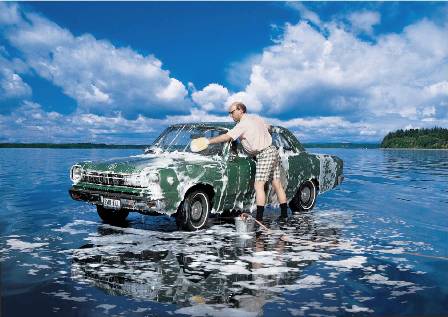 Most car soap contains high amounts of phosphates, a key ingredient spurring aquatic weed growth. Rinsed water running off the car can also contain petrochemicals (gas, oil, grease), solvents, coolants and heavy metals (breaks) The average driveway car wash uses a total of 116 gallons of water, some of which can easily find its way to the lake or a drainage ditch leading to the lake.
Most car soap contains high amounts of phosphates, a key ingredient spurring aquatic weed growth. Rinsed water running off the car can also contain petrochemicals (gas, oil, grease), solvents, coolants and heavy metals (breaks) The average driveway car wash uses a total of 116 gallons of water, some of which can easily find its way to the lake or a drainage ditch leading to the lake.
- Wash your car on a grassy area that does not drain into the lake so that the ground can filter the water naturally.
- Use soap sparingly. Don’t poor the leftover soapy water in an area where it can flow into the lake – it’s best to pour it down the sink when you’re done.
- Use a hose nozzle with a trigger to save water and create less runoff.
- Take your car to a commercial car wash. Most commercial car washes use 60 percent less water in the entire washing process than a simple home wash uses just to rinse off a car. Also, car washes in Massachusetts are required to treat their used water.
9. Animal Waste – Scoop the Poop, Bag it, Trash it
 When your pet goes on the lawn, remember … it doesn’t just go on the lawn. Bag it & trash it.
When your pet goes on the lawn, remember … it doesn’t just go on the lawn. Bag it & trash it.
When our pets leave those little surprises, rain can wash it and bacteria into the lake. The average dog dropping produces 3 billion fecal coliform bacteria. Aside from the health issue, pet and animal waste, like our septic system waste, is also a source of phosphorus. If geese are a problem on your property, consider planting a vegetated buffer along your shoreline to deter them.
Homeowner Resources
Additional Important Information
Lakes and Ponds Management

